When Mary Tyler Moore passed away on Jan 25, 2017, at the age of 80, there was an epic outpouring of grief and gratitude for the actress and author. Moore’s main legacy was the beloved sitcom that bore her name, The Mary Tyler Moore Show, which ran from 1970–77. Most regard it as a feminist landmark, a show in which a self-assured single gal in her 30s was more interested in her rewarding media career than in landing a husband and popping out kids.
Legions of women fans credit the show’s central character, Mary Richards, with inspiring them, including celebrities such as Oprah Winfrey, Tina Fey, Hillary Clinton, Rosie O’Donnell and Katie Couric. Winfrey often tells the story of being a young ambitious TV reporter who was hell-bent on getting a job at WJM-TV, the place Richards worked — a station she later realized was fictional.

It has been said that every woman of a certain generation identified with Mary Richards. And, I would argue, every sensible gay man.
As a kid, I sat transfixed watching Mary Tyler Moore reruns. The ensemble was unmatched, as was the genius writing, and there’s no doubt my choice of journalism as a vocation was influenced by Mary. And I always thought there was something distinctly queer about my association with her. Apparently, I’m not alone, as journalist Michael Musto and designer Isaac Mizrahi agree. What follows are seven reasons why I hail Mary as as much of a gay icon as a feminist one.
One of the greatest gay episodes, ever
In season three, writers hatched one of the funniest and most clever entries in the show’s 168-episode run, “My Brother’s Keeper.” The scheming Phyllis (Cloris Leachman) tries to set her brother up with Mary. But Ben (played by openly gay actor Robert Moore) takes a shine to Rhoda (Valerie Harper), much to the horror of Phyllis, who had a notorious hate-on for her upstairs neighbour.
“My Brother’s Keeper”
Willie Nelsen/YouTube
Spoiler alert: the punch line occurs when Rhoda reveals to Phyllis why she couldn’t possibly be Ben’s type: “He’s gay,” she blurts out, to audience screams and frantic applause.
“Oh, what a relief,” Phyllis gasps back.
The episode was revolutionary for the way in which it treated a character’s being gay nonchalantly, and the fact that it actually provides comfort to Phyllis. When I interviewed Harper in 2006, she identified the episode as one of her favourites.
“When I said that line, “He’s gay,” we got the biggest laugh ever on that show . . . I mean, this was the ’70s, long before Will & Grace or Ellen; there really weren’t gay characters on television back then. The audience laughed and cheered for over a minute. They had to take most of the audience response out for the broadcast cut. It was amazing.”
Intriguing fact: Robert Moore was best known as a director. He had directed the first staging of the legendary gay play, The Boys in the Band and later directed episodes of the MTM spinoff Rhoda, including the wedding episode, one of the highest-rated TV shows in history.
Mary was living the term “chosen family” before it was coined
While Mary’s parents popped up in a few episodes, she was an only child and soon found that her workmates provided a different kind of support. Her surly boss Lou Grant (Ed Asner) clearly served as a father figure, while chief writer Murray (Gavin Macleod) and narcissistic anchor Ted Baxter (Ted Knight) were unruly siblings. In the final episode — widely regarded as one of the best series finales in sitcom history — Mary tells her workmates, “Thank you for being my family.”
The lesbian subtext to the trio of Mary, Rhoda and Phyllis
Why were Rhoda and Phyllis so often at each other’s throats? In his 1993 book, Making Things Perfectly Queer, pop culture theorist Alexander Doty argued there was a lesbian subtext running through the show, and that Phyllis and Rhoda were competing for the affections of Mary. It may seem like a leap, but Leachman was amused when I asked her about the theory in 1997.
“I think Phyllis would have been dying to know what it would be like to be with a woman,” she told me, “but would have died never knowing.”
Rob Copperfield/YouTube
Singles, unite!
For women, the pressure to get hitched and have kids remains epic. After having played the dutiful, if ditsy, wife to her hubby on The Dick Van Dyke Show in the ’60s, the very idea that Mary would remain single for almost the entire run of her own show was in itself radical.
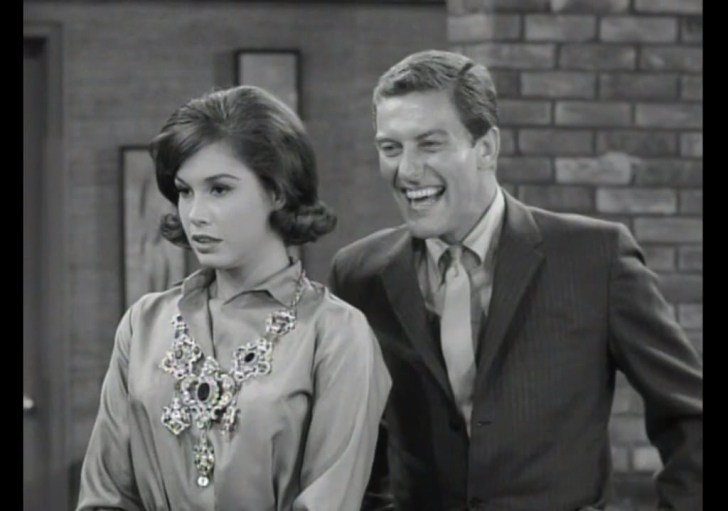
There were plenty of disastrous dates (though she did once get to go out with the stunning cult actor John Saxon), but Mary didn’t seem to mind. She was content with herself, had a rewarding career and appeared immune to the pressure to conform to a ’50s standard. As Nora Ephron wrote of Mary’s single status in Esquire, “The important thing was that Mary Richards didn’t even seem to care.” This will seem even more relevant for queers today, given that the legalization of same-sex marriage in many Western states has led to a rush to the altar. Seven seasons of Mary should stand as an ongoing reminder that happiness comes in all relationship statuses.
The wardrobe
Mary rocked whatever she wore, from mini-skirts to go-go boots to hip belts and an array of divergent hairdos. She turned the WJM newsroom into a runway, ready for work while looking like a fashionista. Sissydude has compiled many of Moore’s best looks, as she portrays Richards and other characters.
Entertainment Tonight/YouTube
The apartment
Mary had the most kick-ass flat in the history of TV homes. A sweet balcony, a kitchen behind a stained-glass sliding window and open-beamed high ceilings helped to create one of the greatest bachelorette pads ever. Despite the space, Mary’s parties never quite worked out; in fact, they were disasters. Alas, in season six, Mary would move into a far less interesting high rise, but we still have the memories.
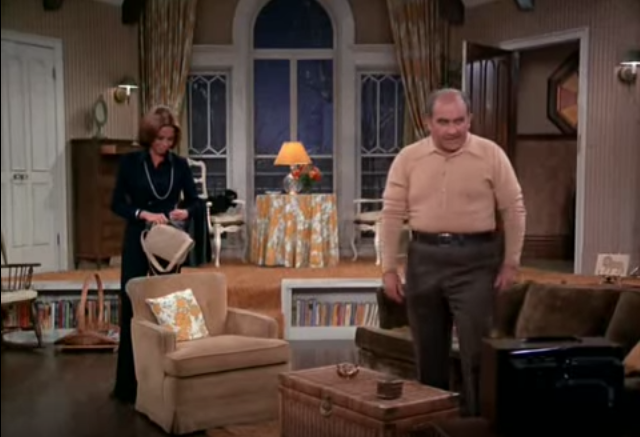
In a 2009 episode of her talk show, Oprah had the set elaborately recreated, where the cast reunited. Hell, even with a fold-out couch for a bed and having to live in front of a studio audience, I still want to move in there.
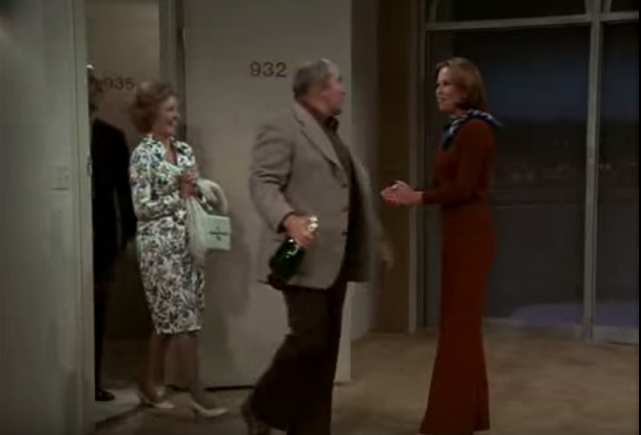
Mary was good, in a great way
Perhaps the defining characteristic of the show was the way it perfectly reflected the character of Mary herself: kind, loyal and patient, Mary Richards was the person you wanted to be.
Even if you couldn’t be quite as good-hearted as Mary was, the show suggested you should at very least try. Even the characters who were set up as foils to Mary’s good nature — the self-aggrandizing, pompous Ted, the self-obsessed, manipulative Phyllis, the scheming nymphomaniac Sue Ann — were all granted a basic humanity by the end of each episode.
The Mary Tyler Moore Show was defiantly optimistic, and that was no small feat in ’70s, which were not the happiest of times in America. The Kent State shootings, the Vietnam War, Nixon’s resignation under threat of his impeachment — all unfolded during the show’s run.
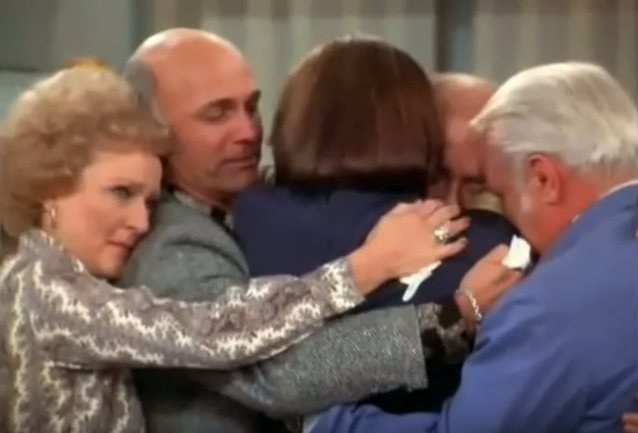
At the time, one sociologist suggested MTM was revolutionary because, “if I’m stoned, it’s the only show that doesn’t make me feel like committing suicide.” That the writers could sustain such an uplifting spirit while never careening into extreme sentimentality is one of MTM’s crowning achievements.
Whenever I’m feeling down, I view an episode, and watching Mary get exasperated (which were her best moments) over not enough servings of veal at a dinner party, bursting into laughter at an inappropriate moment during a funeral, or trying to avoid a landmine while navigating through the wonderful world of dating, never fails to raise my spirits.
In fact, I credit a few VHS tapes full of MTM episodes as one of the main reasons I made it through the AIDS crisis in the ’80s and ’90s. (I wore those tapes down until they were threadbare.)
Given the current situation we now face — the most reprehensible US president in living memory — I would strongly suggest we keep MTM episodes at the ready, in those moments when we desperately need to rejuice our batteries. After all, in the worst of times, we still long to have a good laugh while being reminded that good people do indeed exist. We need Mary now more than ever.
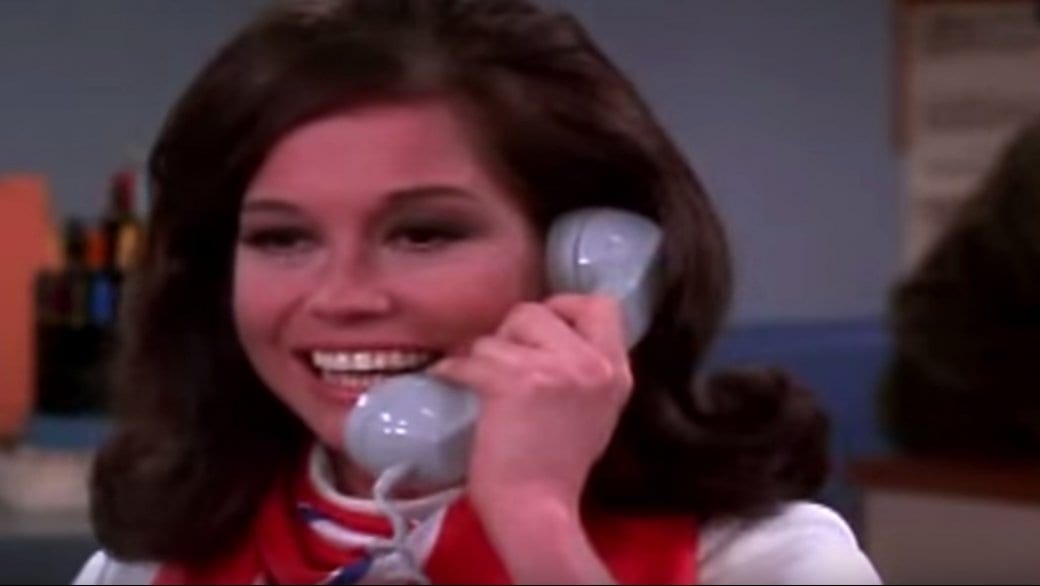
 Why you can trust Xtra
Why you can trust Xtra


